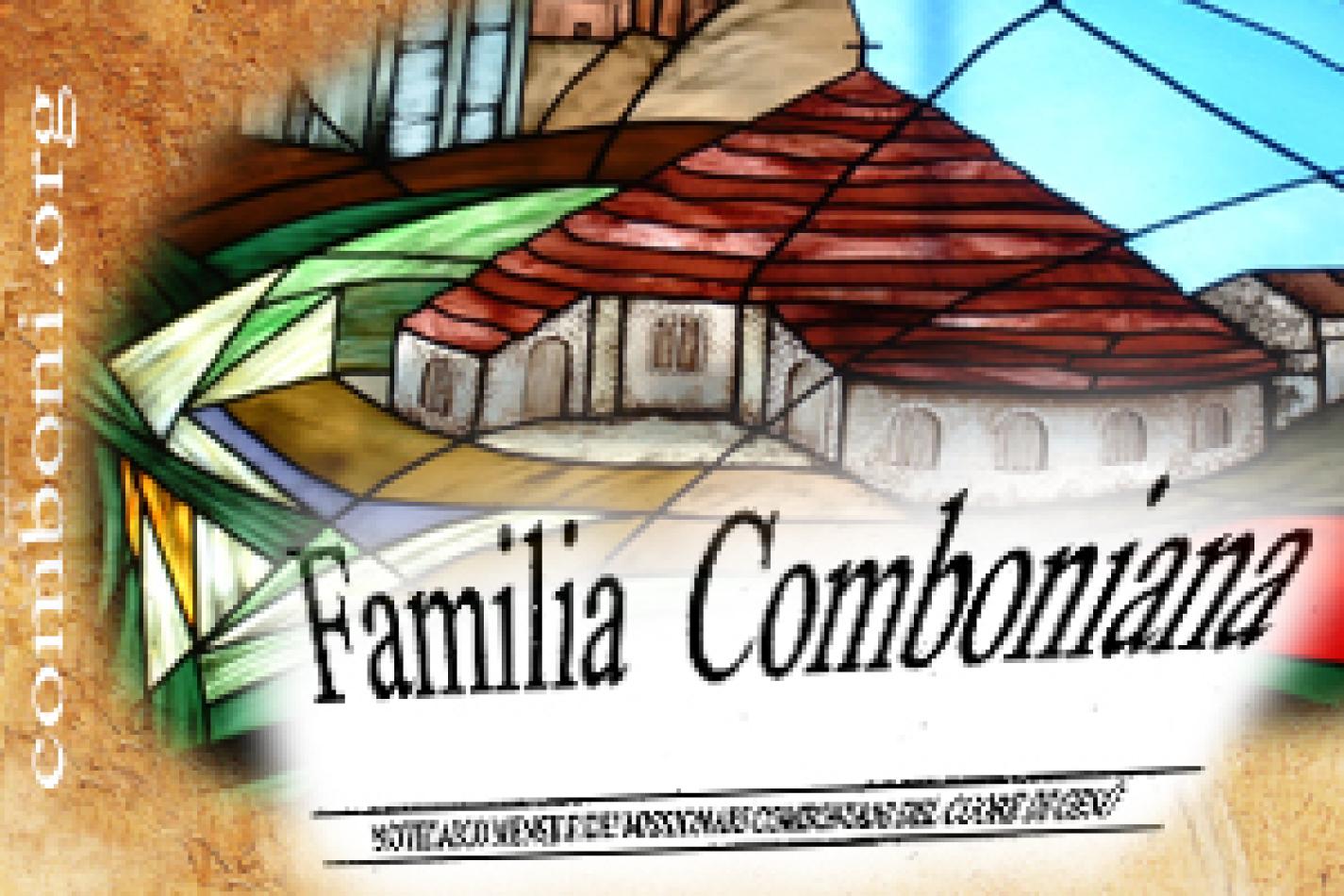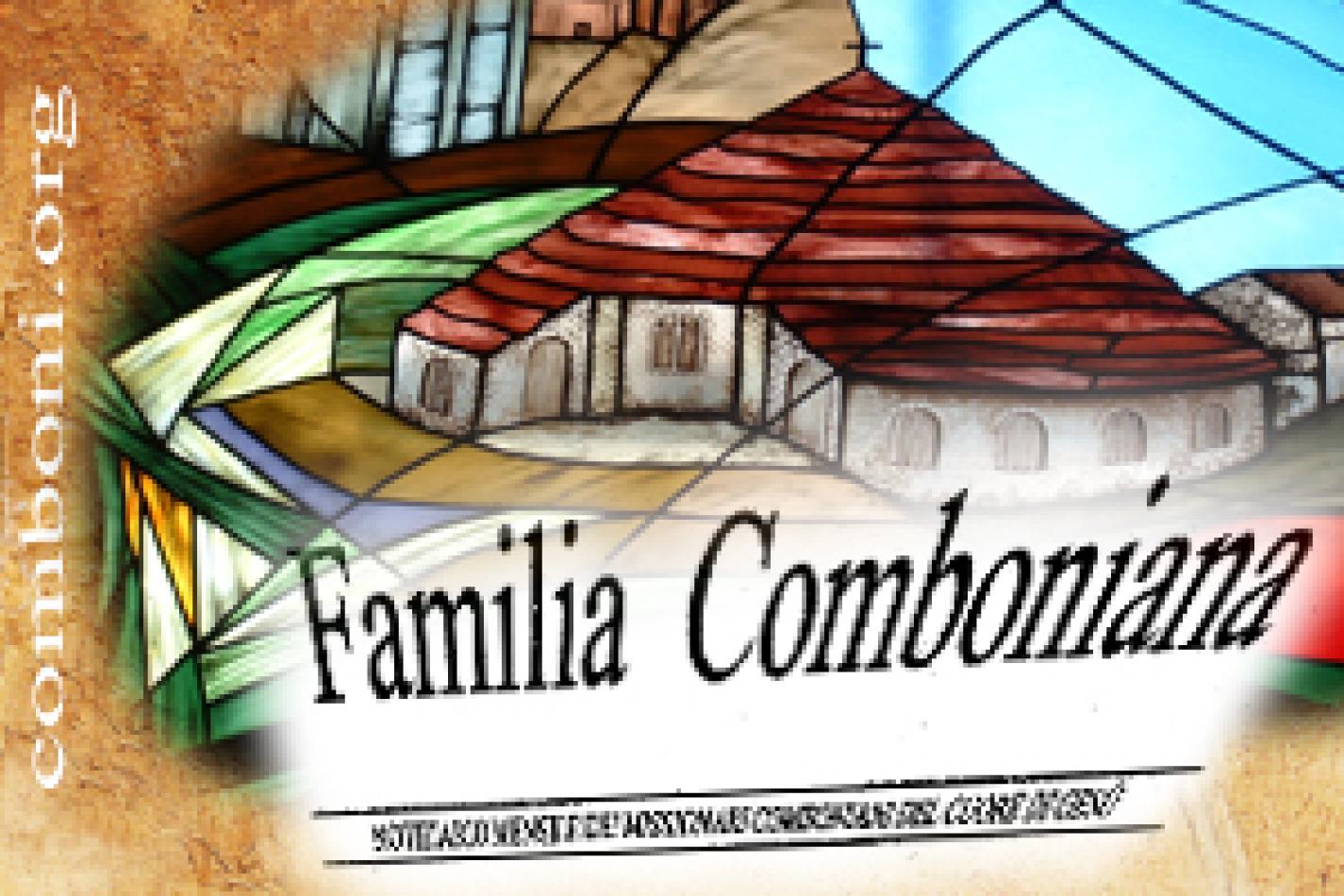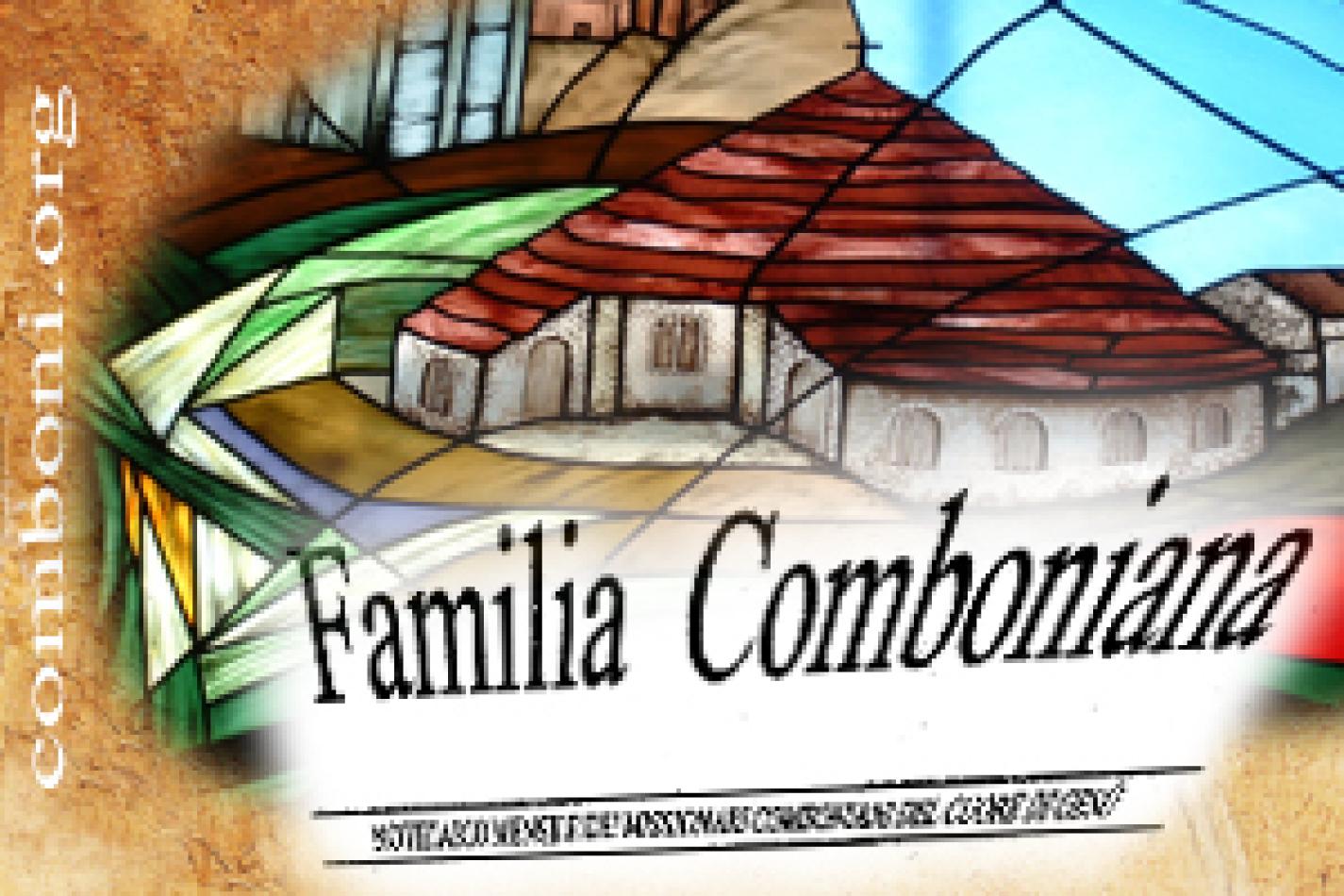Daniel Comboni
Comboni Missionaries
Institutional area
Other links
Newsletter
It is necessary to make ours again the most undreamed of and paradoxical truth of the Christian mystery: The truth of an unpredictable God… who ‘allows himself to be placed outside the world and on the cross’
We wish to see Jesus” (Jn 12:21)… the men and women of our own day… ask believers not only to ‘speak’ of Christ, but in a certain sense to ‘show’ him to them (Novo Millennio Ineunte, 16).
In this quotation we have the ‘mother’ of all the challenges, which places us in a ‘mission situation’, and the common denominator of all situations. What is our answer to such a challenge? Do we attempt to find it with courage by looking at the witnessing and ‘situation’ experienced by Comboni?
1. At the school of the ‘single thought’
It isn’t certainly a ‘feeble thought’, as it weighs up all the thoughts and it is warrantor of the greatness of the person. “Our thought has become set on this great idea; and the regeneration of Africa by Africa seems to us the only programme to be followed… a way along which… to arrive at the lofty goal on which every thought of our life will be centred and for it we would be happy to pour out the last drop of our blood” (from the Plan, W 2753). This single thought appears as a ‘young thought’ because it continuously recreates itself in contact with history. The ‘illumination’ of which Comboni speaks was also the product of a long gestation1. This vision of Comboni is important. His first step “was to get rid of the vision of Mission as it was conceived by the Mazza Institute. This fact needs to be studied further, since it would help in understanding the importance of changing the reference paradigms for today’s Mission effectiveness both in Africa and in Europe”2.
The first phase of the process of the Ratio Missionis has brought to light generality and dispersion. “Traditionally we have almost always tried… to make room for everything… convinced that everything can be of use to the Mission. Historically, little has been done to distinguish what was proper to the Comboni Mission… and what was simply a historical or contextual reaction”3. The consequence is a flattening of the concept of Mission. We need courage for making choices, so that we can free ourselves from generality.
2. To feel with the Church
A trend that is emerging in the Church encourages us to visit afresh Comboni’s other polarity: his mystic experience of personal relationship with Christ, which has shaped his missionary awareness and made a unifying synthesis of his thoughts.
The Ad Gents concludes by speaking of organisations and activities, but immediately the centre of gravity is moved from doing to being. For the Evangelii Nuntiandi Mission is Witness. The sentence of Paul VI has become renown: “Modern man listens more willingly to witnesses than to teachers, and if he does listen to teachers, it is because they are witnesses”. A few years later, in 1991, the Redemptoris Missio deals again with this issue by speaking of the ‘urgency’ (n. 1) of Mission. In chapter II it identifies the Kingdom of God not with a concept, a doctrine, or a program, but with a person who has the face and name of Jesus of Nazareth. It concludes with a chapter about missionary spirituality which is characterised by openness to the Spirit and by self-emptying.
A Letter from the Permanent Italian Bishops’ Council, Christ’s love urges us, 1999, recognises the source and form of Mission in the personal encounter with Christ. At the beginning of the millennium, the Novo Millennio Ineunte outlines the course of Mission for the year 2000 and finds its focal point in the request of the Greeks to Philip: “We wish to see Jesus”, which is interpreted by the Pope as a thirst for the Gospel in today’s people. The only answer to such hope remains the contemplation of the Face of Christ (n. 3). Let us now take into consideration the programmatic text of Pope Benedict XVI: “Being Christian is not the result of an ethical choice or a lofty idea, but the encounter with an event, a person, which gives to life a new horizon and a decisive direction” (Deus Caritas est, 1).
3. Contemplation of Christ Crucified
“They will develop in themselves this most essential disposition (the spirit of sacrifice) by keeping their eyes fixed on Jesus Christ, loving him tenderly and seeking always to understand more fully the meaning of a God who died on the cross for the salvation of souls” (W 2721). It is necessary “to make ours again the most undreamed of and paradoxical truth of the Christian mystery: The truth of an unpredictable God… who ‘allows himself to be placed outside the world and on the cross’… “During my stay with you, the only knowledge I claimed to have was about Jesus, and only about him as the crucified Christ (2Cor 2:2)”4. Though Comboni does not give us many details about his innermost life and personal relationship with Christ, there is a wealth of indications for discovering his mystical dimension. In visiting afresh his charism, therefore, we must underline “The Incarnation as the focal point of Mission. Around this central point the intuitions that have sustained us for years may be unified in a holistic spirituality: The Pierced Heart of the Good Shepherd, the Theology of the Cross, his radical love of Mission and of Africa do harmonically flow from the sotereological dimension of the Incarnation” (op. cit., p. 25). “The personal encounter with Christ is the decisive moment of the missionary’s vocation” (RL 21,1).
Karl Rahner, in one of his booklets, considered a classic in modern spirituality, underlines the importance of this experiential character in our relationship with God: “Tomorrow’s Christian will either be a mystic, that is one who has experienced something, or nothing.”
Within this logic of love, Comboni is able to see what others cannot: A Christ who makes room within himself also for the Africans. Where there is love there is a new capability to see (ubi amor ibi visio). Give me one who loves, St. Augustine would say, and he will understand what I am talking about. When we are on such a track, our thoughts become unified and we recover the passion for Mission. This is the new that the last General Chapter talked about: “The new means to return to that passion for Mission that Comboni… lived and died for (cf. RL 2). The new is looking at the future with optimism… with our poverty and our wealth… it often demands the obligation to return to the purity of our origins” (CA ’03, p. 9).
4. Mission as com-passion
St. Paul, when speaking of the following of the Cross, moves from a static concept to a more dynamic one. He understands that his own sufferings are part of a mysterious completion of the sufferings of Christ (Col 1:24). Comboni places himself within this kind of Paul’s vision. The apostolate carried out through suffering is an effective extension of Christ’s redemption. In this perspective, Mission becomes a participation of God’s movement towards the ‘poorest and most abandoned’. By uniting together the two symbolisms, that of the Pierced Heart and of the Good Shepherd, Comboni moves from a devotional attitude, which marked his years of formation and the beginning of his missionary life, to a theological relationship, which was a strong experience of a love received, the source of his unconditional trust in God. The spirit of sacrifice comes from keeping one’s eyes fixed with love on Jesus Christ Crucified. For this reason Comboni loves the Cross: “Always pray to Jesus and his Most Sacred Heart for me; for I am crucified, so pray that I may truly always have more and more love for the Cross and the thorns that will convert Africa” (W 7156).
This is the testament he leaves to his missionaries. In the Institute, the only true science is that of Jesus Crucified (W 2723). Martyrdom, in the context of a life that is offered up, becomes a perspective which generates desire and comfort: “Oh, what happiness it is to suffer even martyrdom for Jesus” (W 5809).
Life questions us
- Which are our concrete choices when faced by the challenges of today’s Mission?
- How to recover the dimension of the Heart in the Institute’s spirituality?
- How to visit afresh the Comboni’s charismatic inheritance?
- What experience of ‘happiness and comfort’ in acts of love and gestures of concrete compassion?
1 G. Romanato, L’Africa Nera fra Cristianesimo e Islam. L’esperienza di Daniele Comboni (1831-1881), p. 295.
2 Quaderni di Limone 2007, n. 1.
3 Report on the First Stage of the process of the Ratio Missionis, n. 8.
4 Quaderni di Limone, July 2006, p. 9.
In this quotation we have the ‘mother’ of all the challenges, which places us in a ‘mission situation’, and the common denominator of all situations. What is our answer to such a challenge? Do we attempt to find it with courage by looking at the witnessing and ‘situation’ experienced by Comboni?
1. At the school of the ‘single thought’
It isn’t certainly a ‘feeble thought’, as it weighs up all the thoughts and it is warrantor of the greatness of the person. “Our thought has become set on this great idea; and the regeneration of Africa by Africa seems to us the only programme to be followed… a way along which… to arrive at the lofty goal on which every thought of our life will be centred and for it we would be happy to pour out the last drop of our blood” (from the Plan, W 2753). This single thought appears as a ‘young thought’ because it continuously recreates itself in contact with history. The ‘illumination’ of which Comboni speaks was also the product of a long gestation1. This vision of Comboni is important. His first step “was to get rid of the vision of Mission as it was conceived by the Mazza Institute. This fact needs to be studied further, since it would help in understanding the importance of changing the reference paradigms for today’s Mission effectiveness both in Africa and in Europe”2.
The first phase of the process of the Ratio Missionis has brought to light generality and dispersion. “Traditionally we have almost always tried… to make room for everything… convinced that everything can be of use to the Mission. Historically, little has been done to distinguish what was proper to the Comboni Mission… and what was simply a historical or contextual reaction”3. The consequence is a flattening of the concept of Mission. We need courage for making choices, so that we can free ourselves from generality.
2. To feel with the Church
A trend that is emerging in the Church encourages us to visit afresh Comboni’s other polarity: his mystic experience of personal relationship with Christ, which has shaped his missionary awareness and made a unifying synthesis of his thoughts.
The Ad Gents concludes by speaking of organisations and activities, but immediately the centre of gravity is moved from doing to being. For the Evangelii Nuntiandi Mission is Witness. The sentence of Paul VI has become renown: “Modern man listens more willingly to witnesses than to teachers, and if he does listen to teachers, it is because they are witnesses”. A few years later, in 1991, the Redemptoris Missio deals again with this issue by speaking of the ‘urgency’ (n. 1) of Mission. In chapter II it identifies the Kingdom of God not with a concept, a doctrine, or a program, but with a person who has the face and name of Jesus of Nazareth. It concludes with a chapter about missionary spirituality which is characterised by openness to the Spirit and by self-emptying.
A Letter from the Permanent Italian Bishops’ Council, Christ’s love urges us, 1999, recognises the source and form of Mission in the personal encounter with Christ. At the beginning of the millennium, the Novo Millennio Ineunte outlines the course of Mission for the year 2000 and finds its focal point in the request of the Greeks to Philip: “We wish to see Jesus”, which is interpreted by the Pope as a thirst for the Gospel in today’s people. The only answer to such hope remains the contemplation of the Face of Christ (n. 3). Let us now take into consideration the programmatic text of Pope Benedict XVI: “Being Christian is not the result of an ethical choice or a lofty idea, but the encounter with an event, a person, which gives to life a new horizon and a decisive direction” (Deus Caritas est, 1).
3. Contemplation of Christ Crucified
“They will develop in themselves this most essential disposition (the spirit of sacrifice) by keeping their eyes fixed on Jesus Christ, loving him tenderly and seeking always to understand more fully the meaning of a God who died on the cross for the salvation of souls” (W 2721). It is necessary “to make ours again the most undreamed of and paradoxical truth of the Christian mystery: The truth of an unpredictable God… who ‘allows himself to be placed outside the world and on the cross’… “During my stay with you, the only knowledge I claimed to have was about Jesus, and only about him as the crucified Christ (2Cor 2:2)”4. Though Comboni does not give us many details about his innermost life and personal relationship with Christ, there is a wealth of indications for discovering his mystical dimension. In visiting afresh his charism, therefore, we must underline “The Incarnation as the focal point of Mission. Around this central point the intuitions that have sustained us for years may be unified in a holistic spirituality: The Pierced Heart of the Good Shepherd, the Theology of the Cross, his radical love of Mission and of Africa do harmonically flow from the sotereological dimension of the Incarnation” (op. cit., p. 25). “The personal encounter with Christ is the decisive moment of the missionary’s vocation” (RL 21,1).
Karl Rahner, in one of his booklets, considered a classic in modern spirituality, underlines the importance of this experiential character in our relationship with God: “Tomorrow’s Christian will either be a mystic, that is one who has experienced something, or nothing.”
Within this logic of love, Comboni is able to see what others cannot: A Christ who makes room within himself also for the Africans. Where there is love there is a new capability to see (ubi amor ibi visio). Give me one who loves, St. Augustine would say, and he will understand what I am talking about. When we are on such a track, our thoughts become unified and we recover the passion for Mission. This is the new that the last General Chapter talked about: “The new means to return to that passion for Mission that Comboni… lived and died for (cf. RL 2). The new is looking at the future with optimism… with our poverty and our wealth… it often demands the obligation to return to the purity of our origins” (CA ’03, p. 9).
4. Mission as com-passion
St. Paul, when speaking of the following of the Cross, moves from a static concept to a more dynamic one. He understands that his own sufferings are part of a mysterious completion of the sufferings of Christ (Col 1:24). Comboni places himself within this kind of Paul’s vision. The apostolate carried out through suffering is an effective extension of Christ’s redemption. In this perspective, Mission becomes a participation of God’s movement towards the ‘poorest and most abandoned’. By uniting together the two symbolisms, that of the Pierced Heart and of the Good Shepherd, Comboni moves from a devotional attitude, which marked his years of formation and the beginning of his missionary life, to a theological relationship, which was a strong experience of a love received, the source of his unconditional trust in God. The spirit of sacrifice comes from keeping one’s eyes fixed with love on Jesus Christ Crucified. For this reason Comboni loves the Cross: “Always pray to Jesus and his Most Sacred Heart for me; for I am crucified, so pray that I may truly always have more and more love for the Cross and the thorns that will convert Africa” (W 7156).
This is the testament he leaves to his missionaries. In the Institute, the only true science is that of Jesus Crucified (W 2723). Martyrdom, in the context of a life that is offered up, becomes a perspective which generates desire and comfort: “Oh, what happiness it is to suffer even martyrdom for Jesus” (W 5809).
Life questions us
- Which are our concrete choices when faced by the challenges of today’s Mission?
- How to recover the dimension of the Heart in the Institute’s spirituality?
- How to visit afresh the Comboni’s charismatic inheritance?
- What experience of ‘happiness and comfort’ in acts of love and gestures of concrete compassion?
1 G. Romanato, L’Africa Nera fra Cristianesimo e Islam. L’esperienza di Daniele Comboni (1831-1881), p. 295.
2 Quaderni di Limone 2007, n. 1.
3 Report on the First Stage of the process of the Ratio Missionis, n. 8.
4 Quaderni di Limone, July 2006, p. 9.




